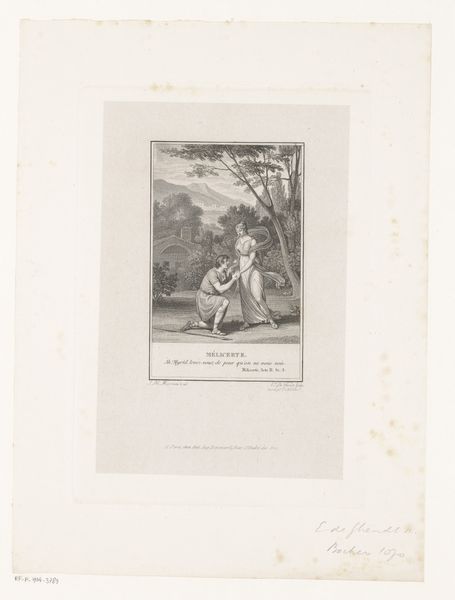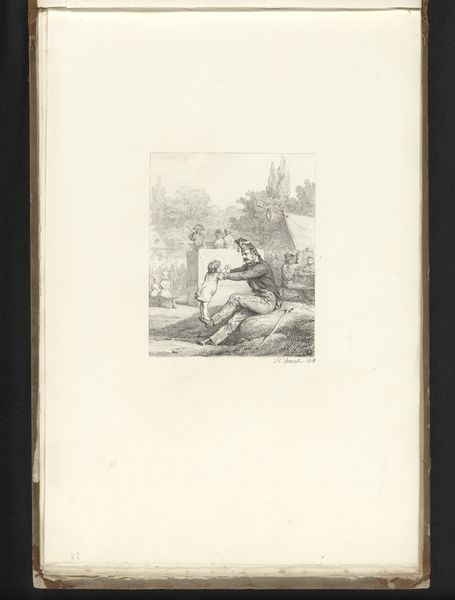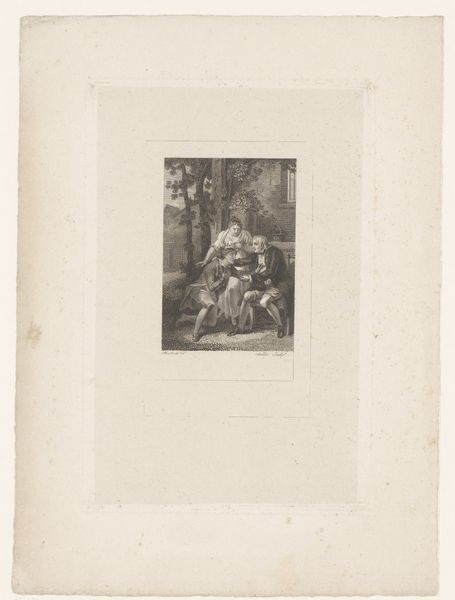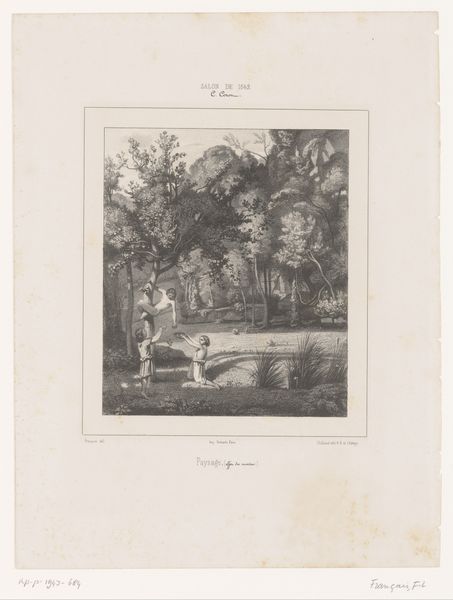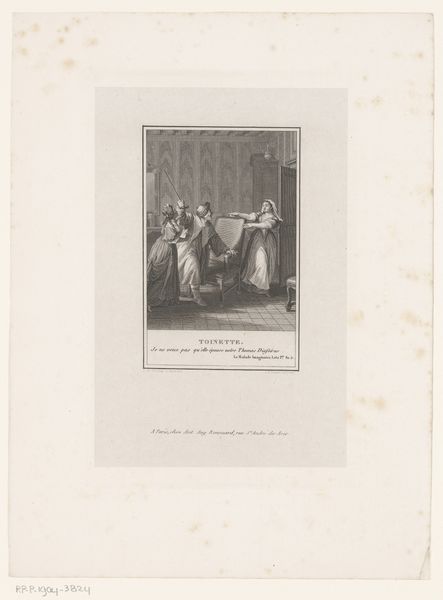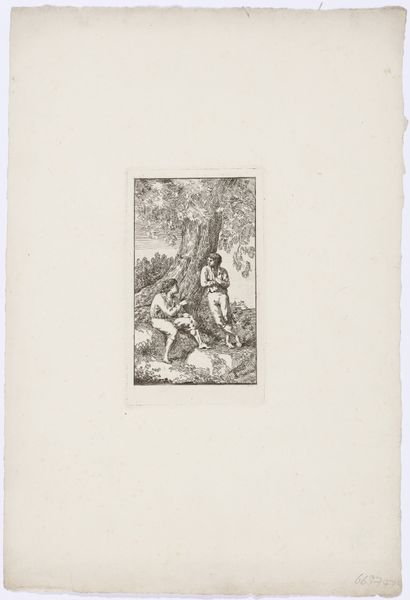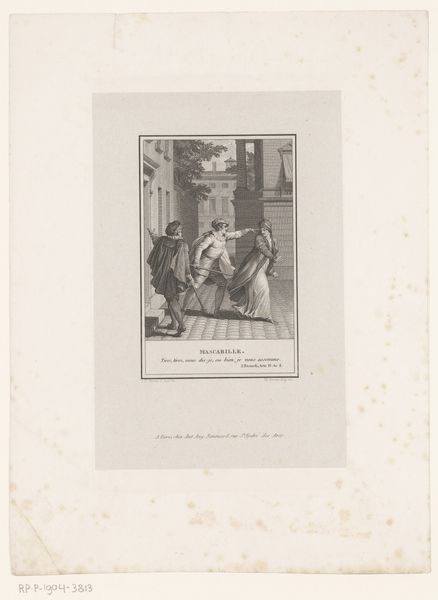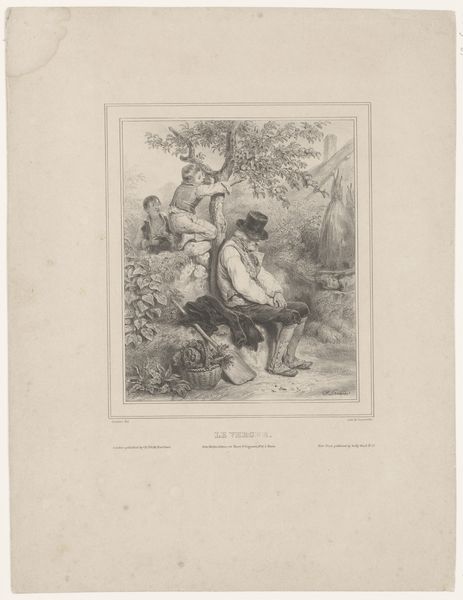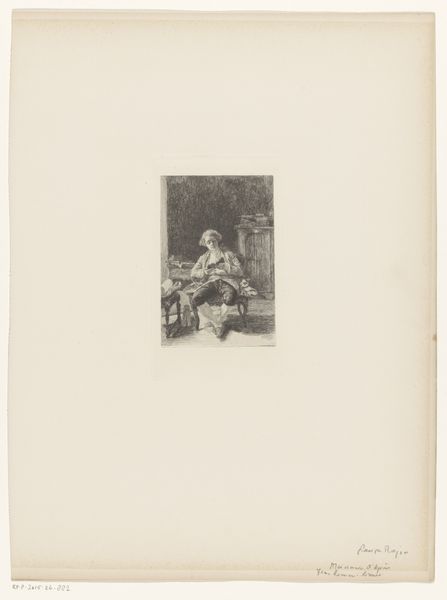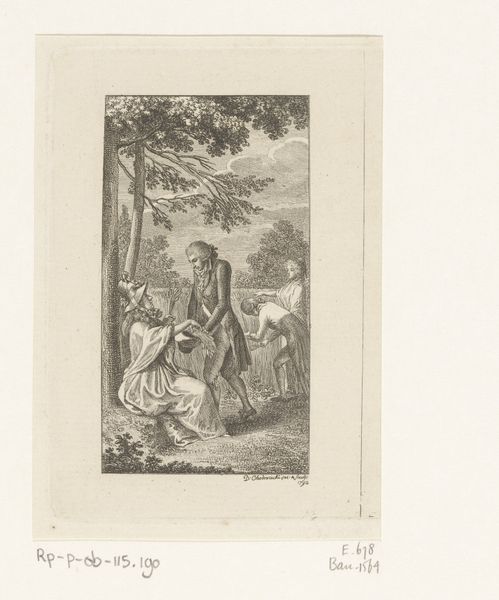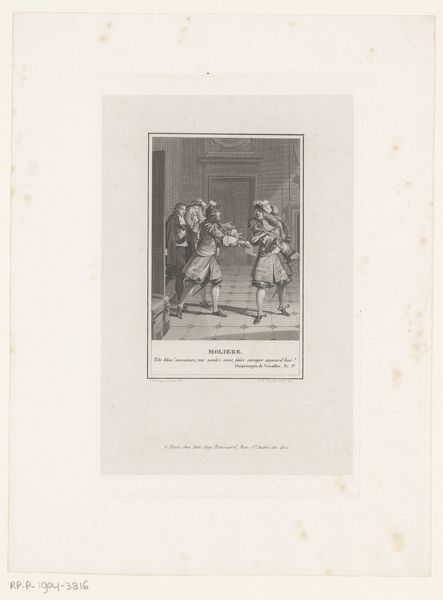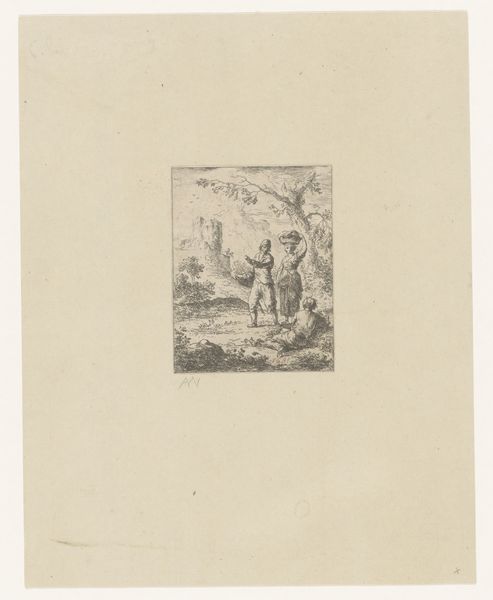
print, engraving
#
neoclacissism
# print
#
landscape
#
figuration
#
history-painting
#
engraving
Dimensions: height 234 mm, width 163 mm
Copyright: Rijks Museum: Open Domain
Curator: This engraving, dating from 1811 to 1813, is titled "Kneeling Man Before a Crowned Woman" and attributed to the Devilliers Brothers. It employs delicate lines to depict a dramatic scene. Editor: It has a definite theatricality, doesn't it? The kneeling man, the woman with a rather commanding gesture... There’s an operatic quality about the whole scene. It whispers stories, half-remembered myths, you know? Curator: The Brothers Devilliers, working within a neoclassical framework, often engaged with historical and figural themes like the one present in this print. Note how the medium of engraving allows for a remarkable level of detail in rendering the figures' garments, their poses, and the landscape. The printmaking process itself would have involved a division of labor. Dozens or even hundreds of prints could be created from a single engraved plate, circulating these narratives widely. Editor: Right, like visual propaganda of its time! The contrast in tone really works; there's a certain tension between light and shadow. It directs your eye precisely where the artists intended, wouldn’t you say? Almost as if staging a scene, a play with stark highlights. Curator: Absolutely. And considering the social context of early 19th-century Europe, prints were an important tool for disseminating ideals. Neo-classicism borrowed its imagery from antiquity, subtly informing power dynamics through allegory and visual narrative. The very act of creating such an object speaks to certain cultural and social values, including reverence of tradition, history, and possibly hierarchy. Editor: Looking at the figure of the man, the way he is posed is as if he is awaiting an intervention... What that may be is what’s on my mind, given that one print might be one interpretation away. Curator: I see it as an era grappling with changing powers and a negotiation of class boundaries, playing out in symbolic forms within a visual medium intended for consumption by a specific audience. What begins as personal artistic expression gains significance as a signifier in society. Editor: Thinking about the historical aspect has actually really pulled me in. Thanks for clarifying! I am going to think more on it…
Comments
No comments
Be the first to comment and join the conversation on the ultimate creative platform.
